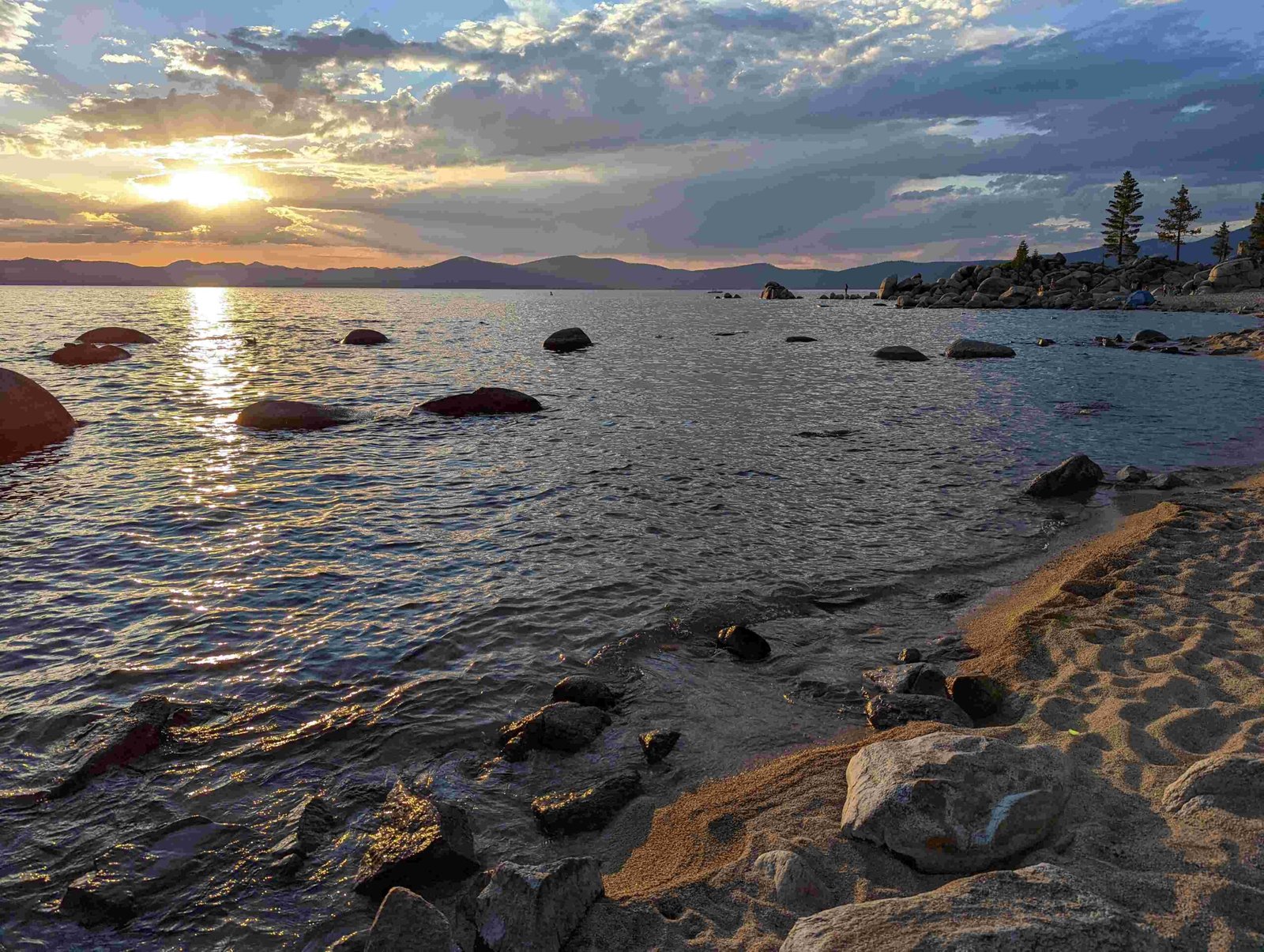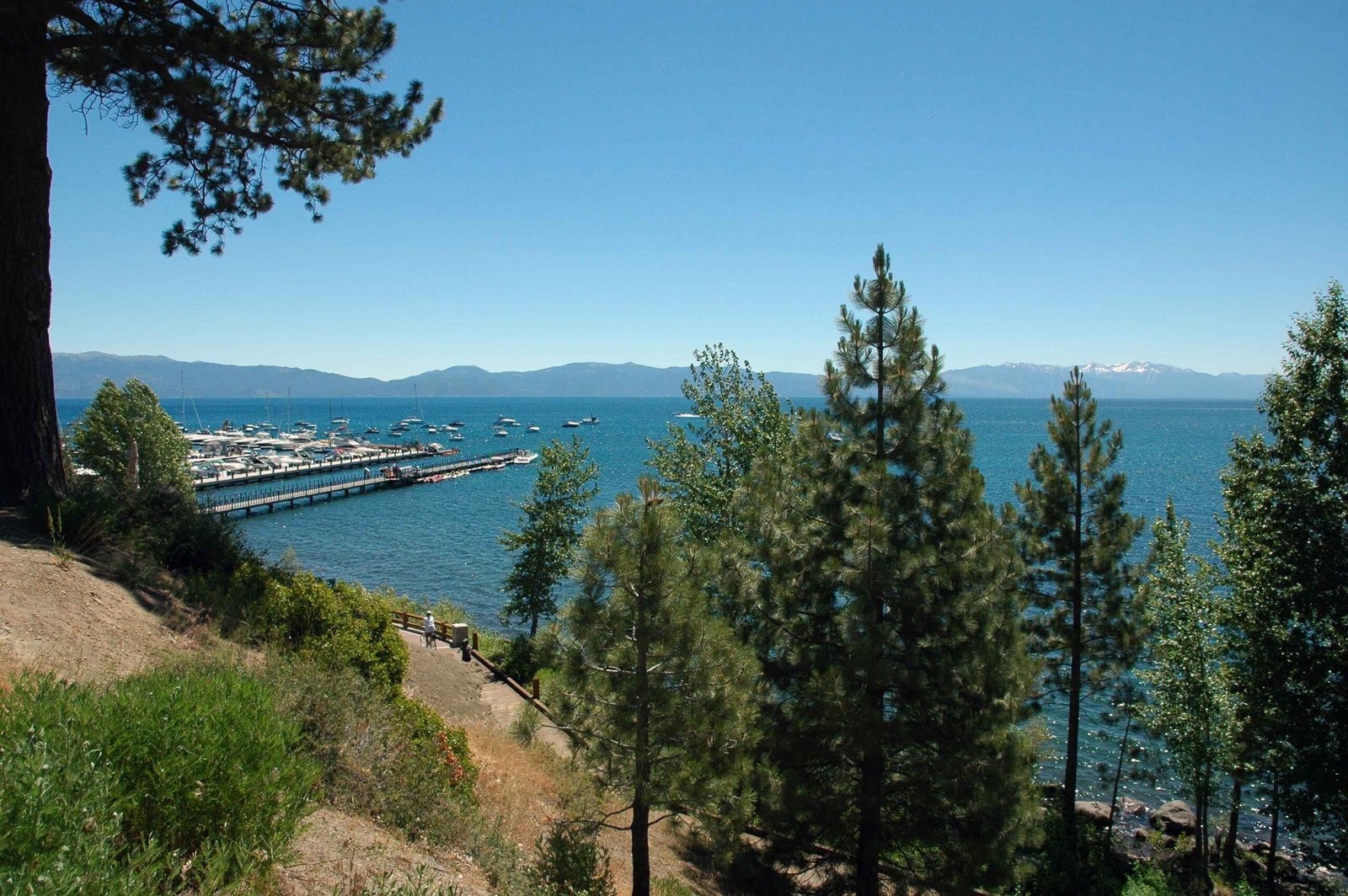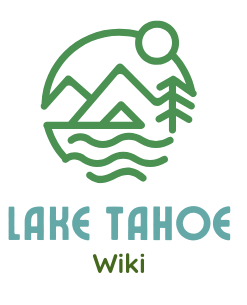Lake Tahoe snow cover has been above normal for the 2023-2024 season, with snowpack levels reaching 102% and 105% of peak snow water content in the Tahoe and Truckee areas, respectively. This follows a trend of variable snowfall in recent years, with some seasons experiencing significantly above-average snowpack while others fell below normal levels. The current season’s snowpack is notable for reaching the rare ‘normal’ range, occurring only 13 times in the last 44 years.
What is the Current Lake Tahoe Snow Cover Percentage?

As of the latest data available for the 2023-2024 season, Lake Tahoe’s snow cover is above normal. The snowpack measurements show:
- Tahoe area: 102% of peak snow water content
- Truckee area: 105% of peak snow water content
These figures indicate a healthy snow cover for the region, which is crucial for water resources and the local economy.
How Does the Current Snow Cover Compare to Historical Averages?

The current Lake Tahoe snow cover is noteworthy for being within the ‘normal’ range, which is relatively rare. Here’s a comparison:
- Current season (2023-2024): At or slightly above normal levels
- Historical context: Only 13 times in the last 44 years has the snowpack been within 80-120% of normal peak amounts
This puts the current season in perspective, highlighting its uniqueness in recent history.
What are the Detailed Snow Depth Measurements Around Lake Tahoe?
Snow depth measurements vary across different locations in the Lake Tahoe area. Here’s a breakdown of some key measurements:
| Location | Elevation | Snow Water Content | Percentage of Peak |
|---|---|---|---|
| Tahoe Snowpack | N/A | 27.5 inches | 102% |
| Truckee Snowpack | N/A | 28.4 inches | 105% |
| Sierra-at-Tahoe (8,852 ft) | 8,852 ft | 346 inches (season total) | N/A |
| Sierra-at-Tahoe (7,300 ft) | 7,300 ft | 258 inches (season total) | N/A |
Additionally, some ski resorts typically have the following peak measurements:
- Mt. Rose Ski Area: Usually peaks at 37.4 inches of snow water equivalent
- Heavenly Valley: Typically peaks around 23.8 inches of snow water equivalent
- Palisades Tahoe: Generally peaks at 50.8 inches of snow water equivalent
It’s important to note that these figures can vary significantly from year to year and even within a single season.
What Does the Latest Lake Tahoe Snow Report Indicate?
The latest snow report for Lake Tahoe reveals several key points:
- Recent Snowfall:
- March storms significantly boosted the snowpack to above-normal levels.
-
Sierra-at-Tahoe received substantial snowfall in January (64 inches) and February (97 inches) at higher elevations.
-
Snow Conditions:
- The snowpack caught up in March after a dry start to the year.
-
This resulted in above-average snowpack for the second consecutive season in California and Nevada.
-
Advisories and Warnings:
- Water managers remain cautious due to variable climate conditions.
- There’s an emphasis on capturing and storing spring snowmelt runoff for future use, given the region’s history of droughts.
How Has Lake Tahoe Snowfall Varied Over the Past Five Years?
Lake Tahoe’s snowfall has shown significant variability over the past five years:
- 2023/24: Above normal (102-105% of peak snow water content)
- 2022/23: Significantly above normal (213-219% of normal in some areas)
- 2021/22: Specific data not available, but part of a variable trend
- 2020/21: Below average in some areas
- 2019/20: Variable, with above-average snowfall in some regions, especially the eastern Sierra
Notable events and trends:
- The 2022/23 season saw extremely high snowpack levels, reaching up to 243% in the eastern Sierra.
- In contrast, the 2015 season was an extreme example of below-normal snowpack, with levels as low as 31%.
- The region has experienced significant variability, with snowpack levels often being well above or well below normal.
What Factors Influence Lake Tahoe Snow Cover?
Several factors contribute to the variability in Lake Tahoe’s snow cover:
- Climate Patterns:
- El Niño and La Niña events can significantly impact snowfall in the region.
-
Long-term climate change trends affect temperature and precipitation patterns.
-
Geographical Features:
- Lake Tahoe’s location in the Sierra Nevada mountain range influences its snowfall.
-
Elevation differences around the lake create varied snow accumulation patterns.
-
Storm Tracks:
- The position and strength of the jet stream affect the frequency and intensity of winter storms.
-
Atmospheric rivers can bring significant moisture and snowfall to the area.
-
Temperature Fluctuations:
- Warmer temperatures can lead to more rain instead of snow, even at higher elevations.
- Cold snaps can enhance snow accumulation and preservation.
How Does Lake Tahoe Snow Cover Impact the Region?
The snow cover in Lake Tahoe has far-reaching effects on the region:
- Water Resources:
- Snowpack serves as a natural reservoir, providing water for California and Nevada.
-
Snowmelt contributes significantly to lake levels and downstream water supplies.
-
Tourism and Recreation:
- Ski resorts and winter sports activities depend heavily on adequate snow cover.
-
Snow conditions influence visitor numbers and the local economy.
-
Environmental Health:
- Snow cover affects local ecosystems and wildlife habitats.
-
It plays a role in forest health and fire risk management.
-
Climate Indicators:
- Changes in snow cover patterns can serve as indicators of broader climate trends.
- Long-term snow cover data helps in climate research and modeling.
What Measures are Taken to Monitor and Manage Lake Tahoe Snow Cover?
Several measures are in place to monitor and manage Lake Tahoe’s snow cover:
- Snow Surveys:
- Regular manual and automated snow surveys measure snowpack depth and water content.
-
The Natural Resources Conservation Service (NRCS) conducts these surveys.
-
SNOTEL Network:
- Automated SNOTEL (SNOwpack TELemetry) stations provide real-time data on snow conditions.
-
These stations measure snow depth, water content, temperature, and other parameters.
-
Satellite Monitoring:
- Satellite imagery is used to assess snow cover extent and changes over time.
-
This technology provides a broader view of snow cover trends across the region.
-
Water Management Strategies:
- Data from snow surveys informs water management decisions for reservoirs and water allocations.
-
Agencies use this information to plan for drought mitigation and flood control.
-
Climate Research:
- Long-term snow cover data contributes to climate research and predictive modeling.
- Scientists study these trends to understand and prepare for future climate scenarios.
By employing these monitoring and management techniques, authorities can better understand and respond to changes in Lake Tahoe’s snow cover, ensuring the best possible management of this crucial resource for both environmental and economic purposes.

